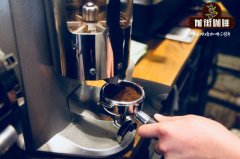What does coffee cup test mean? coffee cup test water powder ratio coffee cup test detailed introduction

Professional coffee knowledge exchange More coffee bean information Please pay attention to coffee workshop (Weixin Official Accounts cafe_style)
Evaluation procedure Samples should first be visually baked for color. This is marked on the worksheet and can be used as a reference when rating specific flavor attributes. The ranking order for each attribute is based on the change in taste perception caused by the drop in temperature of the coffee as it cools:
Step 1 -Fragrance
Within 15 minutes of grinding the sample, the dry aroma of the sample was assessed by removing the lid and sniffing the dry powder.
After soaking in water, the crust remains intact for at least 3 minutes, but no more than 5 minutes. Stir 3 times, then let the foam run down the back of the spoon while sniffing gently. Aroma/aroma scores were then labeled according to dry and wet evaluations.
Step 2 -Taste, Aftertaste, Acidity, Body and Balance
Evaluation of the wine should begin when the sample has cooled to 160oF(71oC), about 8 - 10 minutes from injection. Inhale the white wine into your mouth to cover as many areas as possible, especially the tongue and palate. Because at these elevated temperatures the retro nasal vapours reach their maximum intensity, taste and aftertaste are evaluated at this point.
As coffee continues to cool (160oF - 140oF), acidity, body and balance are evaluated. Balance refers to the tasters assessment of taste, aftertaste, acidity and body harmony.
Step 3: Sweetness, Uniformity and Cleanliness
Brewing method Room temperature (below 100oF) Sweet, homogeneous, assessed and clean cups. For these attributes, cupper will make a judgment on each individual cup, awarding 2 points per cup for each attribute (up to 10 points).
The evaluation of wine should stop when the sample reaches 70oF(21oC) and the overall score is determined by copper and gives the sample a copper "point" based on all attributes.
Step 4 -Score
After evaluating the sample, all scores are added as described in the Scoring section below, and the final score is written in the box in the upper right corner.
END
Important Notice :
前街咖啡 FrontStreet Coffee has moved to new addredd:
FrontStreet Coffee Address: 315,Donghua East Road,GuangZhou
Tel:020 38364473
- Prev

What kind of water do you use to make coffee by hand? what brand of water do you use to make coffee? professional hand brew coffee brand.
Professional coffee knowledge exchange more coffee bean information Please pay attention to the coffee workshop (Wechat official account cafe_style) Water Standard extraction Water Standard Professional Coffee Association Statistics and Standards Committee has established the following standards for the brewing water of professional coffee. In order to better extract the solid substances in coffee, brewing water should have the following characteristics: characteristic target acceptable range 1 odor fresh /
- Next

Basic knowledge of coffee varieties classification of coffee introduction to Arabica coffee
For more information on coffee beans, please pay attention to the coffee workshop (Wechat official account cafe_style) species in sexually reproducing organisms (such as higher plants, such as coffee), species are made up of individuals who can reproduce each other to produce viable offspring. Variety botany is below the species and subspecies level, above the morphological level (morphology /
Related
- Beginners will see the "Coffee pull flower" guide!
- What is the difference between ice blog purified milk and ordinary milk coffee?
- Why is the Philippines the largest producer of crops in Liberia?
- For coffee extraction, should the fine powder be retained?
- How does extracted espresso fill pressed powder? How much strength does it take to press the powder?
- How to make jasmine cold extract coffee? Is the jasmine + latte good?
- Will this little toy really make the coffee taste better? How does Lily Drip affect coffee extraction?
- Will the action of slapping the filter cup also affect coffee extraction?
- What's the difference between powder-to-water ratio and powder-to-liquid ratio?
- What is the Ethiopian local species? What does it have to do with Heirloom native species?

